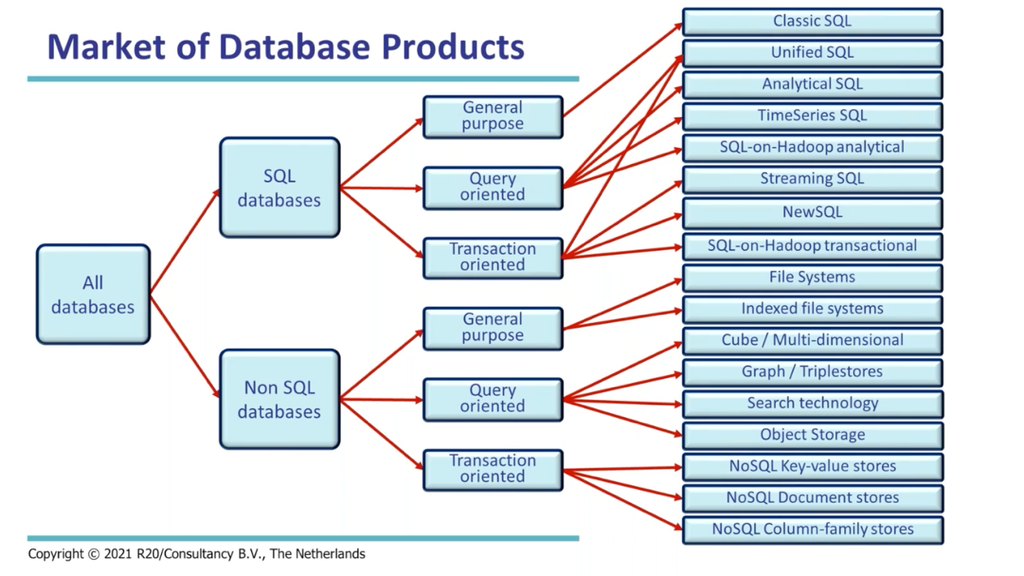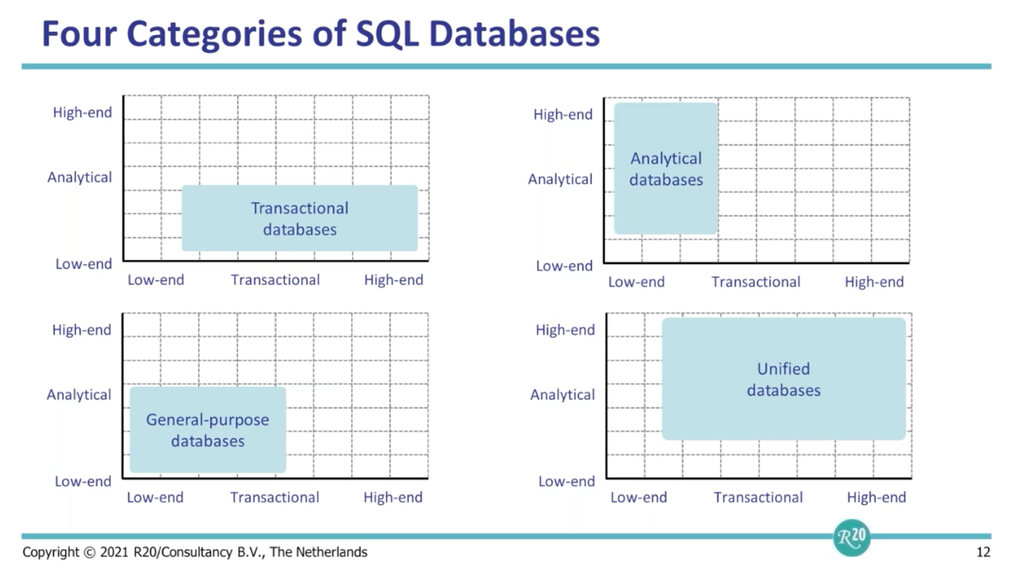
Find out why specialized databases have proliferated in enterprises, why that’s a problem and, more importantly, the antidote for mad complexity: a unified database. This webinar features a technical deep dive from industry analyst Rick van der Lans of R20/Consultancy paired with market context, a product overview and customer examples from SingleStore’s Rick Negrin.
The Antidote for Data Architecture Complexity: A Unified Database

In the likely event you’ve been at your data management job for less than 20 years, you’ve probably wondered, “How on earth did our data environment get so large and out of control?” (Consider the diagram above Exhibit A.) Now you can find out why all manner of specialized databases have proliferated in enterprises over the past couple of decades, why that’s a problem and, more importantly, the antidote for the mad complexity: a unified database.
All of these topics—a snapshot of database history and a look into a future dominated by unified databases—are the subject of a new SingleStore webinar, “Simplifying Data Architectures with a Unified Database,” featuring industry analyst Rick van der Lans of R20/Consultancy and SingleStore’s VP of Product Rick Negrin. Here’s a short recap—the tip of the iceberg, really—of this information-packed webinar.
The root of complexity: copying data
Rick van der Lans dove right into the evolution of enterprise data architectures, from the classic data warehouse, to data marts, to data lakes and data hubs. No matter in what form, he said, “we're just constantly copying data. And of course, maybe in some of these copies, we have changed the database and the data a little bit. We've transformed it a little bit. Maybe we've aggregated but it's still a copy of the original data. Now there are risks involved.”
Copying data, it turns out, is the root of much of the complexity in data environments. Rick spelled out the snowballing disadvantages of data copying:
It leads to high-latency data
Interference on transactional always-on systems
Different architectures need similar data transformation logic
- Difficult to guarantee consistency
Enforcing data security and data privacy rules on copied data
Dealing with failed data copy processes
“Due to the risks involved, maybe we should aim for data architectures in which you need less copying,” Rick said. “Hold that thought.”
The rise of the unified database
For the webinar Rick focused on the fragmentation of the SQL database market, including the rise of the unified databases category. Specifically, unified databases like SingleStore combine the best of both transactional and analytic capabilities, allowing data architectures to be merged, helping to put a stop to endless data copying.

“What's inside the SingleStore product that makes it a unified database server?” Rick asked rhetorically. He then went into detail to explain:
- A “single store” is a row store. It's there to support transactions. With row stores, that means the data is kept in memory, so the transactions are also processed in memory. They are kept in memory in a record-oriented format, which is still the best. The product doesn't use B-tree indexes, which are not ideal in a transactional environment. SingleStore uses skip lists, which are almost designed for transactional environments.
- SingleStore offers strong consistency. If two users access the same data at the same time, they'll see the same result. There's fast data injection through pipelines. If we want to get into streaming applications, SingleStore is built for the cloud, to support a massive transactional workload. It's also built to support a massive analytical query workload.
- Of course, SingleStore has all the advanced query optimizations or techniques that you would expect from an analytical database. But in addition to that, it compiles queries. The advantage of compiling queries is that when users enter similar queries, the optimization doesn't have to take place again; the optimization, the column, the plan, or the query strategy is already there. That speeds up certain queries: IT support reference tables, for example, speed up the parallelization of join processing. SingleStore supports geospatial data types and geospatial functions; more users are not only interested in knowing who bought what, but where they bought it.
The magic of Universal Storage
“But the magic of the SingleStore product,” Rick elaborated, “is that it has a new table type called Universal Storage, a table that combines the advantages of a column store with a row store. On the outside, it looks like any other table. But on the inside, if we insert data in this table through transactions, it will be stored in the row store part of the table, which is in memory and which supports skip lists. It's really, really fast!”
He continued, “Eventually, data moves automatically from the row store to the column store. If you want to do analytics, you’ll organize your data in a column-oriented format. And that's exactly what the column store is. So, the table type called Universal Storage combines the strengths of both; it allows us to run analytics on tables, on which we can also do transactions. That is a very, very unique feature that SingleStore offers.”
Rick summed up, “If we use unified database servers in our architecture, there will be less copying of data. As I covered at the beginning of my talk, there are a lot of disadvantages linked to copying. A unified database also means lower data latency. As we're getting more and more into the world of real-time analytics, it’s important that the data architectures become much simpler, and therefore much more agile. That’s important for organizations, and that’s what SingleStore delivers.”
Listen, learn and get started with SingleStore
That was just part one of the webinar—Rick van der Lans then handed the mic over to SingleStore’s Rick Negrin, who did a great job of putting the technical information into real-world context. Our product manager talked about why modern applications are so data intensive, yet legacy database technology struggles to keep up. To learn about the five attributes of data-intensive applications, how SingleStore addresses them, and how companies are using SingleStore in critical production environments, watch the webinar “Simplifying Data Architectures with a Unified Database.”
If you can’t wait, get started with SingleStore today and take advantage of our offer for $600 in free credits. Follow us on Twitter @SingleStoreDB and in our new Twitter channel for developers, too: @SingleStoreDevs.





